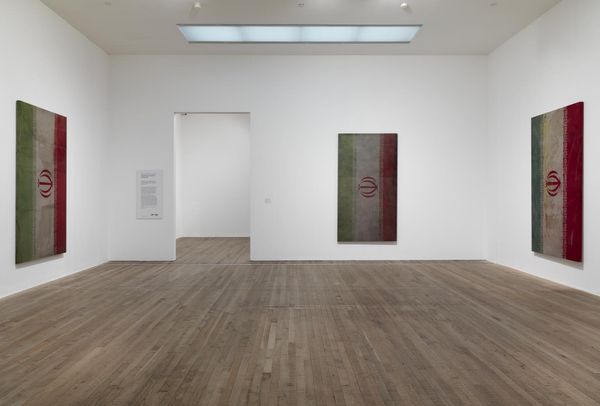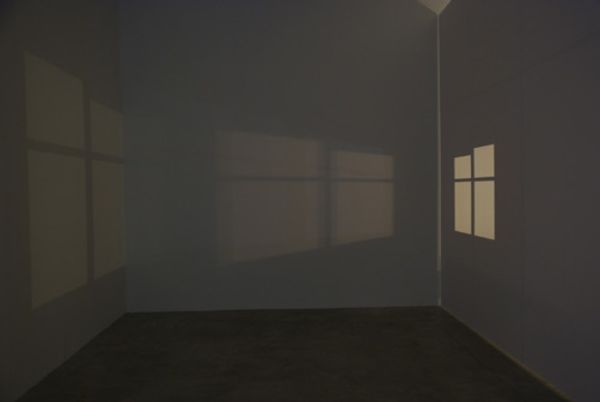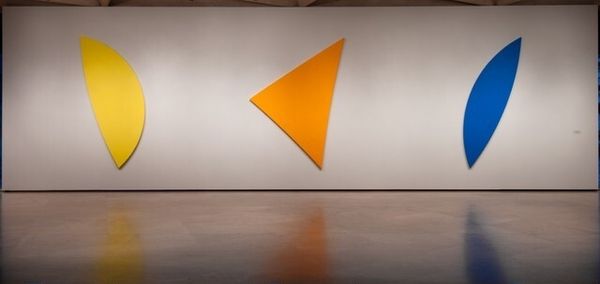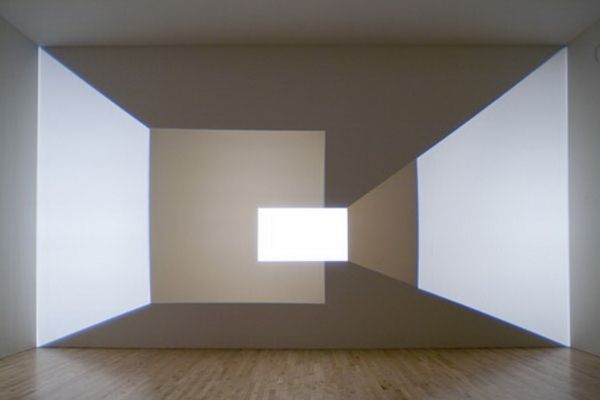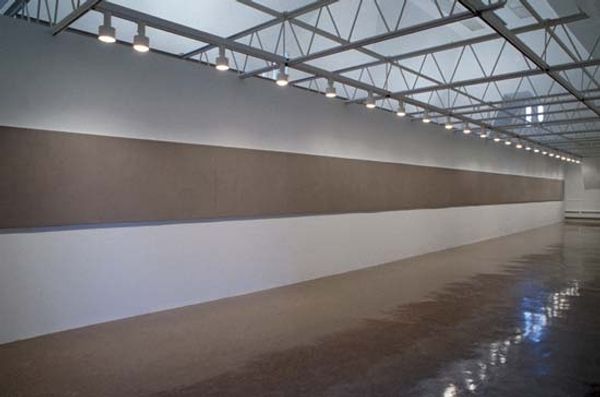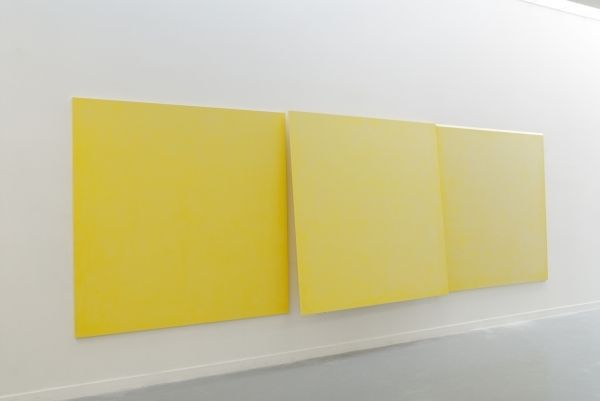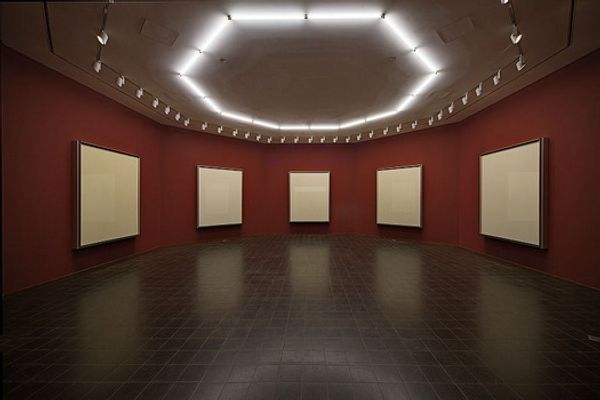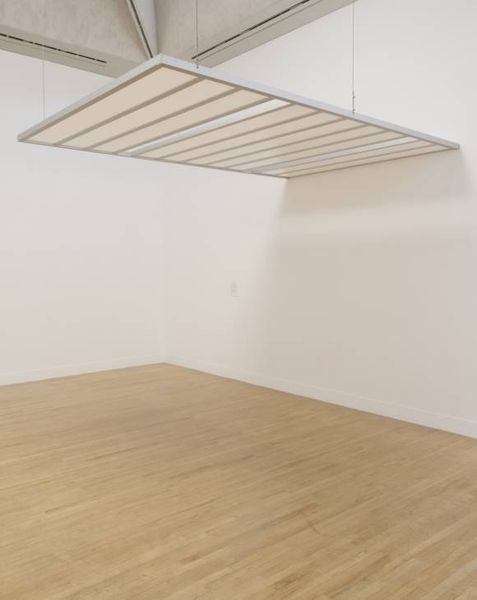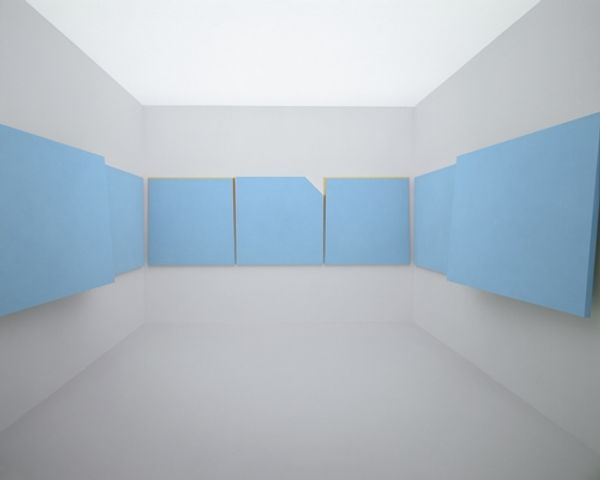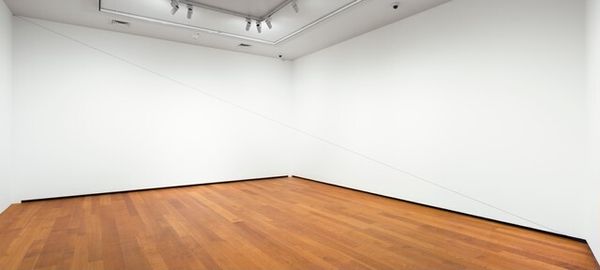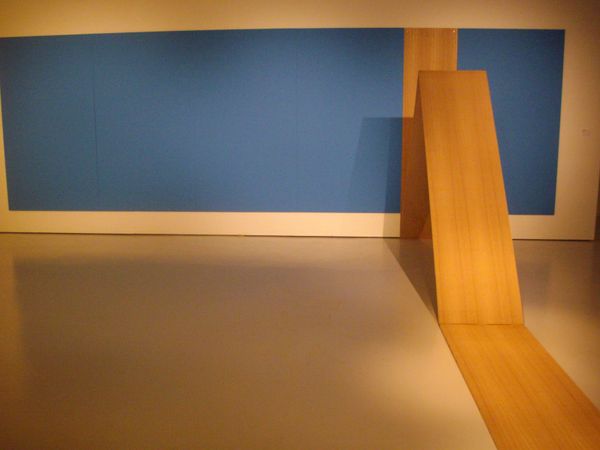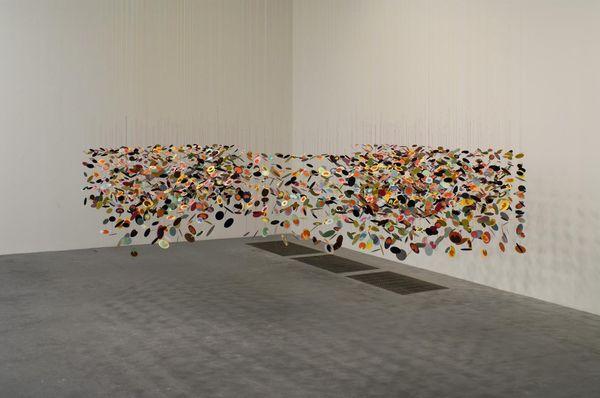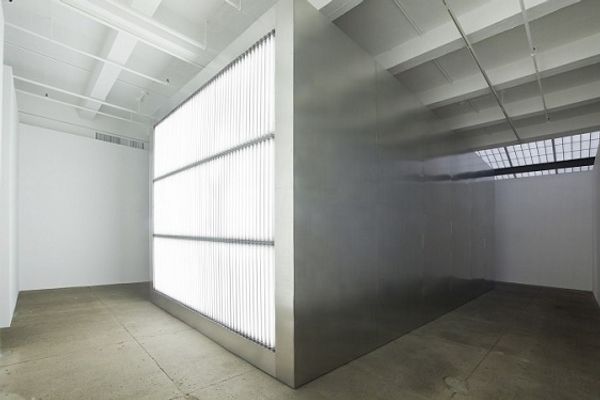
Copyright: Wolfgang Laib,Fair Use
Editor: Here we have Wolfgang Laib’s "Pollen from Hazelnut" created in 2013. It seems like a simple square of bright yellow, like sunshine fallen onto the gallery floor. How should we approach interpreting something that seems so minimal? Curator: Consider what is *not* minimal: the labor. Laib meticulously gathers this pollen. The means of production, in this case, become the subject, challenging our notion of value. Where does value lie – in the pollen itself, in the artist’s effort, or in the commodification of nature for the gallery? Editor: So, it’s less about what the pollen *is* and more about the *process* of its collection and presentation? Is that correct? Curator: Precisely. Think of the social context. Laib isn’t just plucking flowers. He’s engaging in a seasonal, agricultural act. He’s making a connection to nature and then transplanting that into this space of commerce and high art. How does the ephemeral nature of the material factor into your understanding? Editor: Because pollen is easily disturbed, doesn't last forever… it brings the idea of impermanence, doesn’t it? And that contrast with the supposedly permanent space of a museum makes me think about cycles and our relationship to the natural world. Curator: Yes, its ephemeral nature speaks volumes about value itself. We, as consumers in the art world, assign monetary and cultural value, but Laib reminds us of something inherently invaluable yet fragile, linked to both organic origins and human labor. Editor: That’s such an interesting way to look at it. I initially saw this piece as just a beautiful, simple form, but now I'm seeing it as a complex statement on labor and value. Thanks for sharing that! Curator: My pleasure. Considering materiality truly transforms our viewing experience, wouldn’t you agree?
Comments
No comments
Be the first to comment and join the conversation on the ultimate creative platform.
